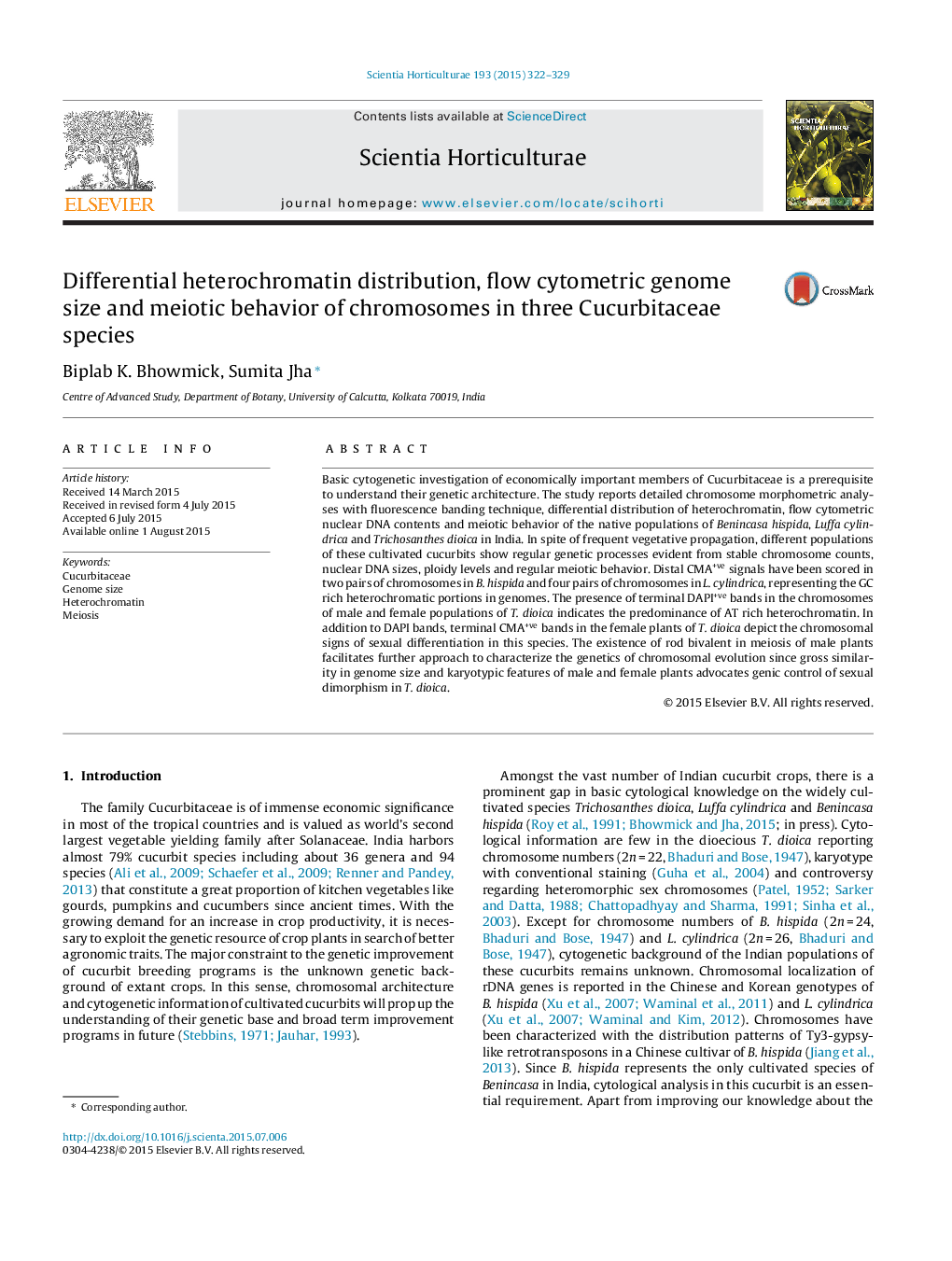| کد مقاله | کد نشریه | سال انتشار | مقاله انگلیسی | نسخه تمام متن |
|---|---|---|---|---|
| 4566213 | 1628805 | 2015 | 8 صفحه PDF | دانلود رایگان |

• Fluorochrome banding has aided cytogenetic characterization of 3 cucurbits.
• Nuclear DNA contents and meiotic behavior advocate stable genetic processes.
• CMA+ve bands in female Trichosanthes dioica serve as sex specific marker.
• Meiotic analysis in T. dioica suggests nascent stage of gonosome evolution.
Basic cytogenetic investigation of economically important members of Cucurbitaceae is a prerequisite to understand their genetic architecture. The study reports detailed chromosome morphometric analyses with fluorescence banding technique, differential distribution of heterochromatin, flow cytometric nuclear DNA contents and meiotic behavior of the native populations of Benincasa hispida, Luffa cylindrica and Trichosanthes dioica in India. In spite of frequent vegetative propagation, different populations of these cultivated cucurbits show regular genetic processes evident from stable chromosome counts, nuclear DNA sizes, ploidy levels and regular meiotic behavior. Distal CMA+ve signals have been scored in two pairs of chromosomes in B. hispida and four pairs of chromosomes in L. cylindrica, representing the GC rich heterochromatic portions in genomes. The presence of terminal DAPI+ve bands in the chromosomes of male and female populations of T. dioica indicates the predominance of AT rich heterochromatin. In addition to DAPI bands, terminal CMA+ve bands in the female plants of T. dioica depict the chromosomal signs of sexual differentiation in this species. The existence of rod bivalent in meiosis of male plants facilitates further approach to characterize the genetics of chromosomal evolution since gross similarity in genome size and karyotypic features of male and female plants advocates genic control of sexual dimorphism in T. dioica.
Figure optionsDownload as PowerPoint slide
Journal: Scientia Horticulturae - Volume 193, 22 September 2015, Pages 322–329